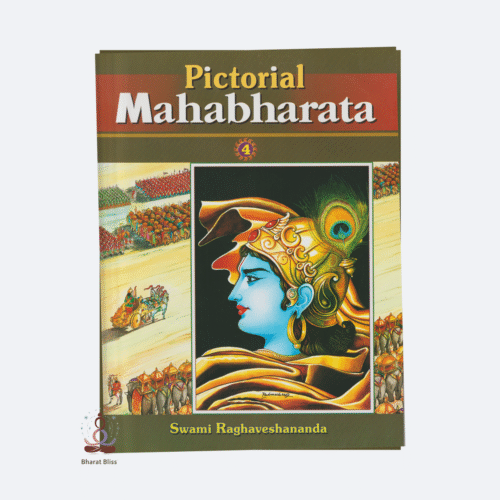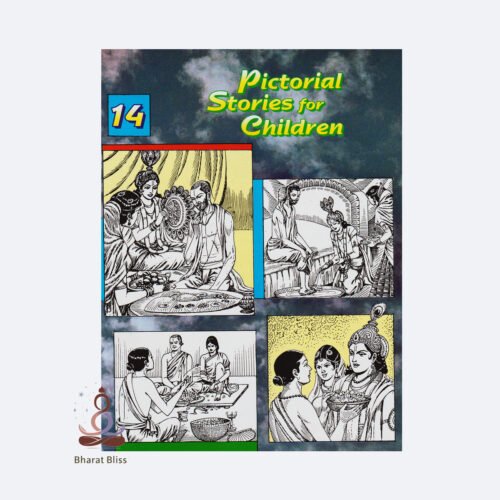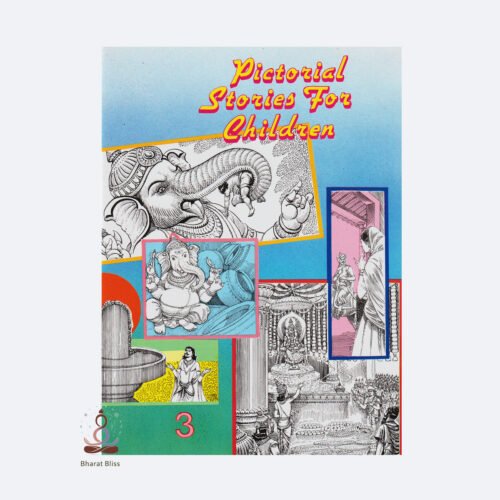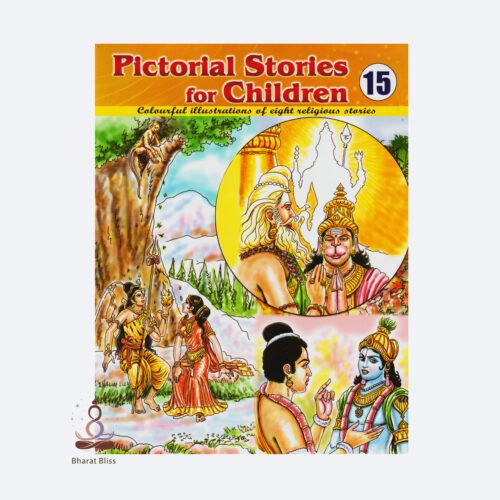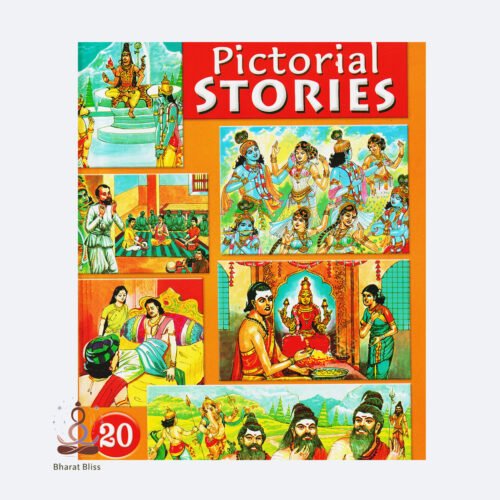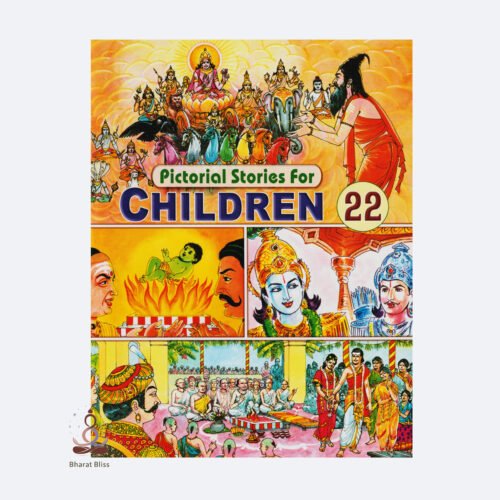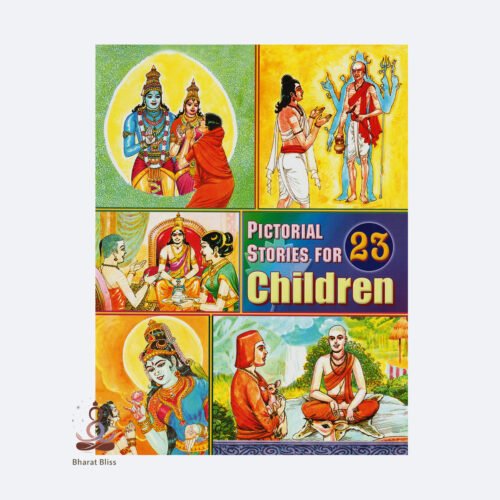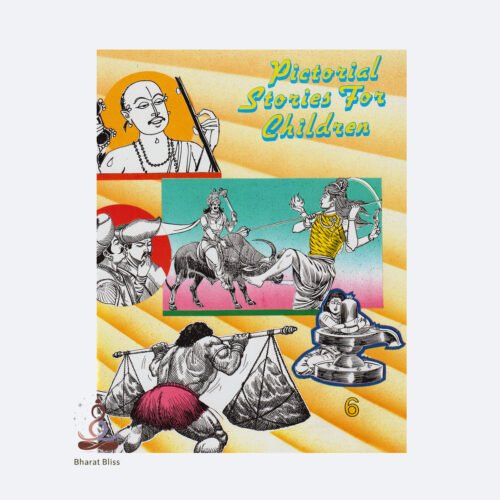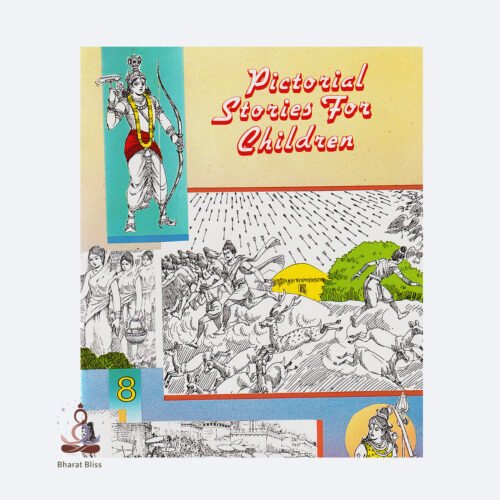Pictorial for Children: Inspiring Stories from the Holy Trio is a beautiful journey into the lives of Sri Ramakrishna, Holy Mother Sarada Devi, and Swami Vivekananda — three great spiritual luminaries who changed the world with their love, wisdom, and courage.
Designed especially for young minds, this book presents timeless stories in a simple and engaging way, accompanied by colorful illustrations that capture the imagination. Each story highlights important values such as kindness, truthfulness, self-confidence, compassion, and devotion.
Children will be gently introduced to the profound lessons of these great souls — how Sri Ramakrishna’s innocence and deep devotion won every heart, how Holy Mother’s endless patience and unconditional love served as a guiding light, and how
Pictorial for Children: Inspiring Stories from the Holy Trio is a beautiful journey into the lives of Sri Ramakrishna, Holy Mother Sarada Devi, and Swami Vivekananda — three great spiritual luminaries who changed the world with their love, wisdom, and courage.
Designed especially for young minds, this book presents timeless stories in a simple and engaging way, accompanied by colorful illustrations that capture the imagination. Each story highlights important values such as kindness, truthfulness, self-confidence, compassion, and devotion.
Children will be gently introduced to the profound lessons of these great souls — how Sri Ramakrishna’s innocence and deep devotion won every heart, how Holy Mother’s endless patience and unconditional love served as a guiding light, and how Swami Vivekananda’s fearlessness and dream of serving humanity inspire even today.
Through these inspiring tales, young readers not only learn about the lives of the Holy Trio but also absorb the eternal ideals they stood for. This pictorial book aims to sow the seeds of goodness, strength, and faith in the hearts of children, nurturing them to grow into responsible, courageous, and compassionate human beings.
Ideal for reading at home, in schools, or during spiritual gatherings, Pictorial for Children: Inspiring Stories from the Holy Trio is a treasure for every child's bookshelf — a gift of wisdom wrapped in joy.
Is "
Pictorial for Children: Inspiring Stories from the Holy Trio" The book tells about three great souls:
Sri Ramakrishna Paramhansa – the wonderful ideal of devotion, meditation and love of God.
Sri Ma Sharda Devi – a living example of compassion, service and motherhood.
Swami Vivekananda – the source of inspiration of strength, courage and service to humanity.
This book contains short inspiring stories from the lives of these three, which teach children good values, truth, love and self-confidence.
Through pictures, their teachings reach deep into the minds of children.
’s fearlessness and dream of serving humanity inspire even today.
Through these inspiring tales, young readers not only learn about the lives of the Holy Trio but also absorb the eternal ideals they stood for. This pictorial book aims to sow the seeds of goodness, strength, and faith in the hearts of children, nurturing them to grow into responsible, courageous, and compassionate human beings.
Ideal for reading at home, in schools, or during spiritual gatherings, Pictorial for Children: Inspiring Stories from the Holy Trio is a treasure for every child's bookshelf — a gift of wisdom wrapped in joy.
Is "
Pictorial for Children: Inspiring Stories from the Holy Trio" The book tells about three great souls:
Sri Ramakrishna Paramhansa – the wonderful ideal of devotion, meditation and love of God.
Sri Ma Sharda Devi – a living example of compassion, service and motherhood.
Swami Vivekananda – the source of inspiration of strength, courage and service to humanity.
This book contains short inspiring stories from the lives of these three, which teach children good values, truth, love and self-confidence.
Through pictures, their teachings reach deep into the minds of children.







